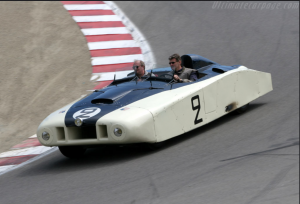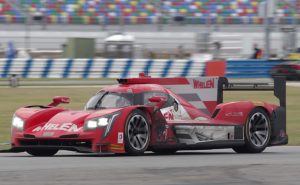 The 2020 racing season has officially started with last weekend’s running of the Rolex 24 at Daytona. A Cadillac DPi won the twice-around-the-clock race, but the event’s big news takeaway was a surprising and extremely welcome announcement made the Thursday before.
The 2020 racing season has officially started with last weekend’s running of the Rolex 24 at Daytona. A Cadillac DPi won the twice-around-the-clock race, but the event’s big news takeaway was a surprising and extremely welcome announcement made the Thursday before.
IMSA, the American sports car racing sanctioning body owned by NASCAR, and Europe’s ACO, which sanctions the FIA World Endurance Championship (WEC) series, are creating a prototype class that will allow teams to compete for overall wins on both sides of the Atlantic.
This news is huge, probably the biggest since the American Le Mans Series (ALMS) and the GrandAm Racing Series merged in 2014 to create what is now the IMSA WeatherTech SportsCar Championship.
If you’ve seen or been aware of the Academy Award -nominated movie Ford vs. Ferrari, you probably have some appreciation for the history and passion of the 24 hrs of Le Mans. It’s the world’s oldest endurance race, held annually since 1923 except during the war years, and considered one of the most prestigious motorsports contests in the world.
Every sports car racing team, driver and carmaker wants to win at Le Mans. And while endurance races on both sides of the pond are comprised of various classes, each of which crown winners, real racers care most about beating everybody; spraying champagne from the top of the podium, winning the race overall, because second place is first loser.

Le Mans and the WEC always had the home field advantage because if you wanted to race there you had to have a car built to their rules and specs. For most of the race’s history their car classes were more similar than different to the American racing classes. That’s why Le Mans has attracted participation from just about every automobile manufacturer one could name, from Audi, Bentley, BMW, Cadillac, Ford and Jaguar to Mazda, Nissan, Porsche, Peugeot and Toyota. Among many others.
That began changing after the turn of the century. A difference in vision, philosophy and leadership became clear. Yes, America was split between the ALMS (American Le Mans Series, which emulated the ACO rules) and the new, France family -backed Grand American Road Racing Series The ACO took a high-tech direction re: aero, engines, motors, hybrid technology, etc. GrandAm took a lower tech, lower cost approach, emphasizing relative performance equality among mfrs and lower costs.
The ACO result was predictable: speeds and cost exploded while manufacturer involvement shriveled.
GrandAm and the ALMS became IMSA, resulting in growth, more mfr participation and, eventually, a network TV contract.
Note: The 2019 24 Heures du Mans saw one ‘factory’ team, from Toyota, and it finished one-two, just like it qualified. Estimated cost of a first-class FIA World Endurance Championship effort in the past few years? $250 million.

No wonder the ACO had to make a move.
Six months ago, they announced an all-new top class for endurance racing called Hypercars, aiming to tie on-track racing more closely with showroom car sales. They had a clause preventing cars not tied to an automotive nameplate from competing, effectively eliminating highly successful private teams that have always been the backbone of racing. An unstated goal was to have factory racing programs that were somewhere in the neighborhood of eight figures instead of nine.
IMSA did not celebrate the Hypercar concept. Its plans were in place, featuring the premier class Daytona Prototypes International (Dpi) supported by Acura, Cadillac and Mazda. The Hypercar rules would not let American IMSA teams to race at Le Mans with the cars they run at Daytona, Sebring, Long Beach, etc. And only three major brands (Toyota, Aston Martin and Peugeot) plus one boutique car company (the famous Scuderia Cameron Glickenhause) pledged to compete in the new class.
Then, last week, the Red Sea parted and a path to the promised land – one top-tier prototype class for both series — was revealed.
It won’t happen until September 2021 for the start of the WEC season and January 2022 for the first race of the IMSA schedule … but it looks like it’s going to happen.
At the press conference, Gérard Neveu, CEO of the WEC, said “the big winner today is endurance racing, as the door is now opened to many additional competitors to compete at the highest level on both sides of the Atlantic with the same car.”
“This presents a fantastic opportunity,” said Nelson Cosgrove, head of Mazda Motorsports. “It’s what we’ve been hoping for.”
IMSA Chairman Jim France said, “When my father, Bill France Sr., brought the first Daytona Continental sports car race here to Daytona International Speedway back in 1962, he wanted to bring together sports car drivers, teams and manufacturers from around the world. With the ACO, IMSA and manufacturers aligned, today’s announcement proudly takes my father’s vision to the next level.”

The details about the new car are more than vague; they’re undetermined. We know, or strongly believe, that Multimatic, Ligier, Dallara and Oreca will be the initial chassis builders but who knows how many engine manufacturers will participate? Especially if costs are reasonable.
The new car has tentatively been nomenclatured as the LMDh, a compromise between the ACO’s traditional LMP1 (Le Mans Prototype 1) class name and IMSA’s DPi (Daytona Prototype international). Presumably, the small letter h after the cap letters LMD is for a rules-dictated common hybrid KERS (kinetic energy recovery system).
But who knows? IMHO, the new car should be a Grand Touring Prototype (GTP), and if they continue with the series-similar spec LMP2 it should be called a GTP2 or GTP Light.
This is a big, big deal for sports car racing fans and Arizona International Raceway @ Attesa. Our FIA-spec circuit was designed for everything from F1, IndyCar and IMSA to NASCAR, SRO Motorsports, TransAm and MotoGP. We’re excited about the AOC/IMSA announcement and can’t wait for what’s to come.
